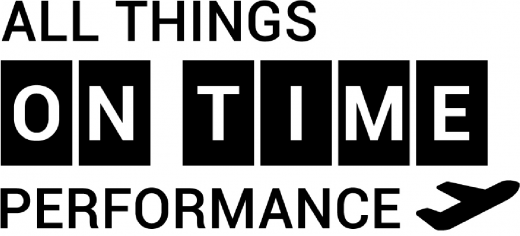As we enter 2025, the aviation industry is preparing for a year filled with opportunities, challenges, and transformations. Among the key topics shaping discussions, airline capacity stands out as a major focus.
Airlines worldwide are making strategic decisions to balance growth with efficiency, adapting to shifting travel demand and economic uncertainties. While European carriers are showing confidence due to disciplined capacity management and fare adjustments, U.S. airlines are fine-tuning their networks to navigate changing market conditions.
Meanwhile, the air cargo sector faces a year of unpredictability, largely driven by economic instability and evolving trade policies. On the sustainability front, new initiatives are emerging, such as IATA’s SAF Matchmaker Platform, which aims to accelerate the transition to sustainable aviation fuel (SAF).
Let’s take a closer look at the key developments making headlines in January.
European Airlines Take a Cautious but Confident Approach
European airlines are stepping into the first quarter of the year with a rare sense of confidence. While many struggle to navigate what is traditionally the weakest financial period, projections suggest that the situation will be significantly better than in past years. A key factor behind this cautious optimism is disciplined airline capacity growth, along with a gradual increase in airfares.
Interestingly, some of Europe’s largest carriers have opted to reduce capacity rather than expand aggressively. Turkish Airlines, for example, has cut its seat count by 19% due to ongoing supply chain constraints, with 17% of its fleet (78 aircraft) currently inactive. While this limits growth, the airline has managed to offset some of the financial impact by raising average fares by 25%. Similarly, Lufthansa has also scaled back operations, signaling that some airlines are prioritizing stability over expansion in 2025.
On the other hand, several European low-cost carriers continue to expand. EasyJet is increasing capacity by 8%, though this comes at the cost of a 2% drop in average fares, indicating that demand stimulation remains necessary despite an improving market. Ryanair, facing aircraft delivery delays from Boeing, has taken a slightly more conservative approach, expanding by 7% while reducing fares by 5%. Pegasus Airlines stands out as the most aggressive of the European carriers, growing its network by 17% and launching new routes to destinations like Edinburgh, Lisbon, and Dublin.
Despite supply chain issues, capacity discipline and steady fare increases suggest that airlines are in a stronger position for financial resilience this quarter. With fuel prices in Europe slightly lower than last year and controlled seat supply, the outlook remains positive despite seasonal challenges.
U.S. Expands Airline Capacity but with Strategic Adjustments
At first glance, airline capacity in the U.S. appears to be growing modestly in the first quarter of 2025, with a 1.1% year-over-year increase, bringing the total number of available seats to 270 million. However, this overall growth masks significant underlying adjustments across the industry.
According to OAG:
- The domestic market, which represents the majority of U.S. airline operations, is seeing a 1.3% increase, bringing total capacity to 249 million seats.
- Meanwhile, international capacity is declining by 1.8%, a surprising shift that suggests weaker demand in some long-haul markets.
Within this landscape, U.S. airlines are taking widely different approaches.
United Airlines is among the more aggressive carriers, expanding by 5.8% overall, including a 6% increase in domestic capacity. American Airlines, however, is more cautious, increasing by just under 1%. Meanwhile, JetBlue is cutting its total seat count by 4%, a move aligned with its broader network restructuring efforts.
Among low-cost carriers, the divergence in strategy is even more pronounced. While some ultra-low-cost airlines are expanding significantly, others are scaling back. Allegiant Air is increasing its seat count by 14%, while Frontier Airlines is growing by 10%, both betting on continued demand for budget travel. Breeze Airways, still in its rapid expansion phase, is growing by a staggering 53%, an ambitious move for a relatively new airline.
Overall, while capacity in the U.S. is technically increasing, these major shifts suggest that airlines are recalibrating their strategies based on demand fluctuations and operational realities. With an uncertain economic outlook and potential policy changes under a new presidential administration, U.S. airlines will need to remain adaptable and strategic as 2025 unfolds.

Air Cargo Braces for a Volatile Year
According to Air Cargo News, the sector saw 12% growth last year, driven by tight capacity and rising freight rates. However, 2025 presents significant challenges, shaped by trade regulations, evolving e-commerce trends, and geopolitical uncertainty.
One of the biggest concerns is the increasingly protectionist trade policies of the U.S. The Trump administration’s new regulatory measures, including potential tariff hikes and changes to de minimis rules, could disrupt global supply chains.
New regulatory filing requirements in the U.S. are also adding administrative burdens for cargo operators. The potential tightening of de minimis exemptions—which currently allow packages valued under $800 to enter the U.S. tax-free—could significantly impact e-commerce shipments, a growing share of air cargo traffic.
Despite these uncertainties, some industry leaders remain optimistic, noting that demand fundamentals remain strong. If global trade tensions ease, cargo operators could benefit from continued e-commerce growth and logistical agility. However, with an unpredictable regulatory landscape, the industry must remain adaptable throughout the year.
IATA’s SAF Matchmaker Platform to Boost Sustainability
Sustainability remains a major focus in 2025, with airlines seeking innovative solutions to reduce their carbon footprint. One of the most significant developments is the International Air Transport Association (IATA)’s upcoming launch of the SAF Matchmaker Platform.
This initiative aims to connect airlines with Sustainable Aviation Fuel (SAF) suppliers, addressing one of the key barriers to widespread SAF adoption—limited availability.
One of the platform’s greatest advantages is the comprehensive data it provides to airlines. Users will have access to detailed information about available SAF, including:
- Production volumes (how much SAF is available and where)
- Feedstock types (what materials were used, such as waste oils, biomass, or synthetic sources)
- Production locations and technologies (where the SAF is made and the production process used)
- Emissions reduction impact (how much carbon footprint reduction SAF can offer)
- Regulatory compliance with key sustainability frameworks, such as the Carbon Offsetting and Reduction Scheme for International Aviation (CORSIA) and the European Union’s Renewable Energy Directive (EU RED)
This level of transparency allows airlines to make informed decisions about SAF procurement, ensuring compliance with sustainability and regulatory requirements.
Although SAF adoption remains costly, increasing investments and regulatory incentives could help scale production and reduce costs over time. As SAF becomes more accessible, it will play a critical role in shaping the sustainability strategies of major airlines, influencing both operational planning and future airline capacity decisions.
On-Time Performance: The Most Punctual Airlines of 2024
Punctuality remains a key factor in airline competitiveness. As 2025 begins, Cirium’s latest report highlights the top-performing airlines in terms of on-time performance in 2024:
- Aeromexico topped the global rankings with an on-time performance rate of 86.70%.
- Saudia and Delta Air Lines followed closely behind, reinforcing strong operational reliability.
- Delta was the most punctual major U.S. carrier, while ANA and JAL led the Asia-Pacific region.
This year, carriers are expected to continue leveraging AI-driven solutions to improve on-time performance and minimize operational delays.
Final Words
As we navigate the first months of 2025, it’s clear that airline capacity will be a defining factor in shaping the aviation industry’s trajectory. With an unpredictable economic landscape and ongoing operational challenges, airlines will need to remain agile and strategic to optimize capacity effectively.
With advancements in technology, evolving passenger preferences, and the ever-present challenge of balancing demand with efficiency, 2025 is set to be a year of transformation for global aviation. As airlines refine their strategies and adapt to changing market conditions, one thing is certain—adaptability will be the key to success.
>> How do you think airlines should balance capacity growth and operational efficiency in 2025? Share your thoughts in the comments!





0 comments on “Aviation Wrap-Up January 2025: Airline Capacity, Growth & More”